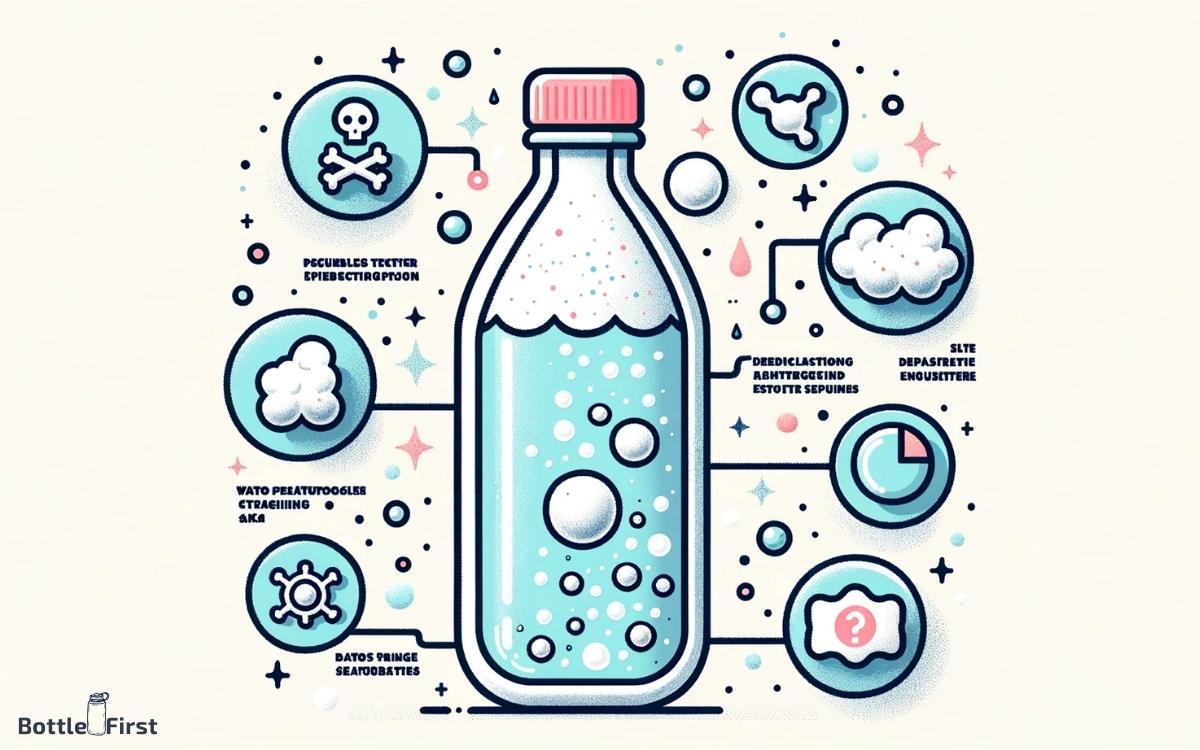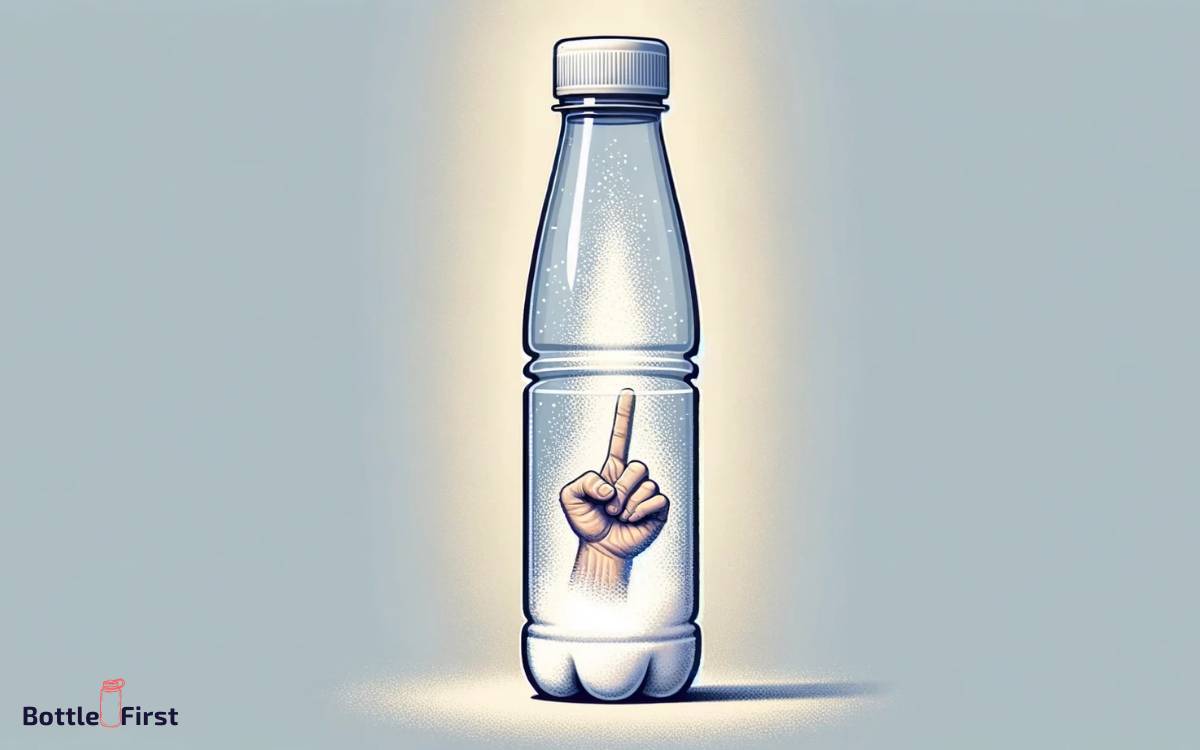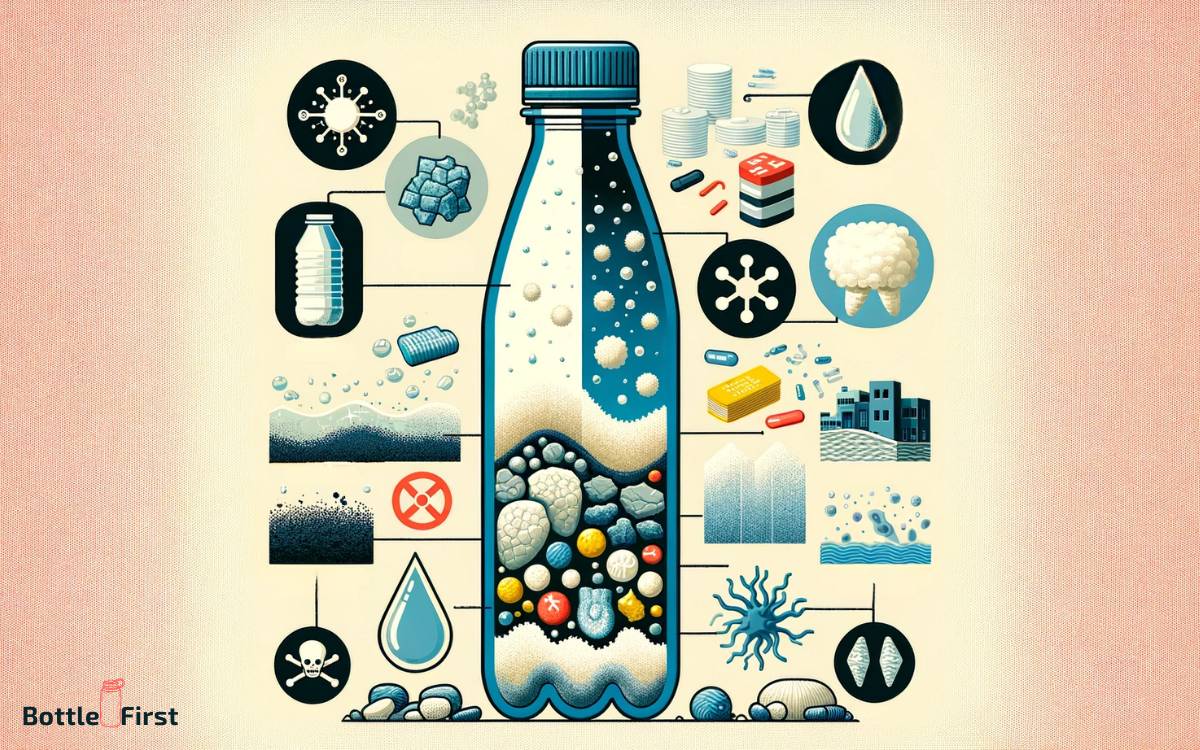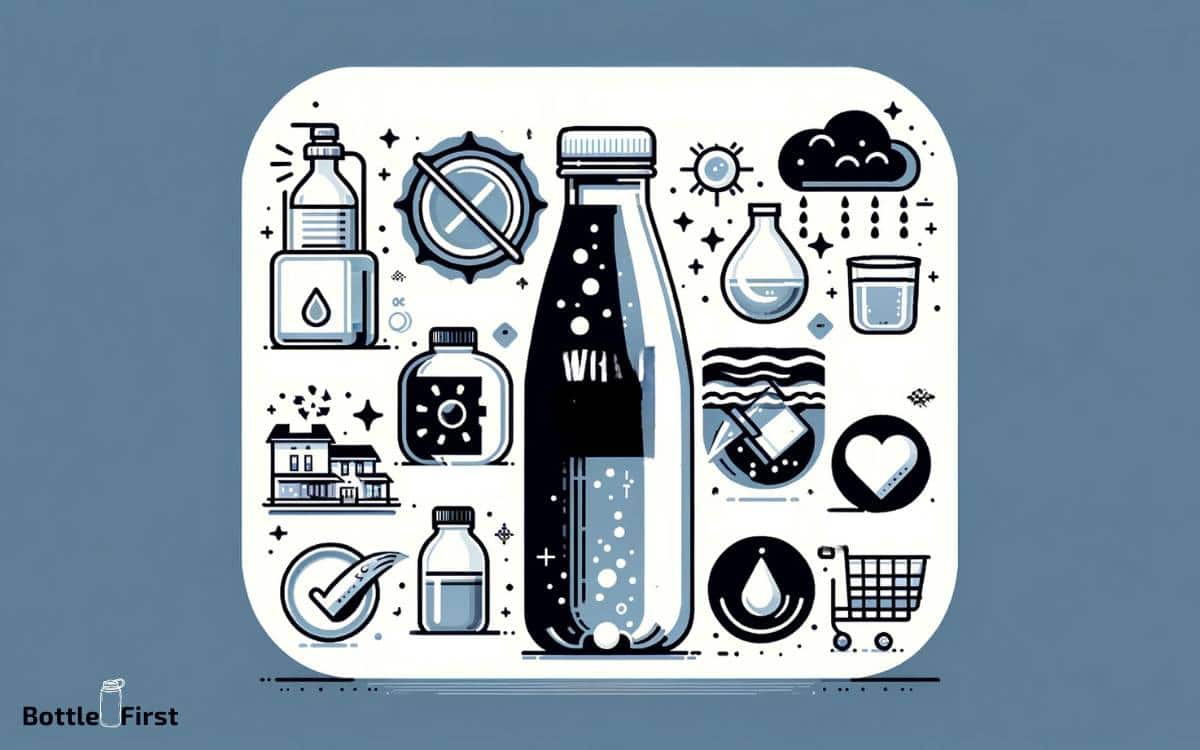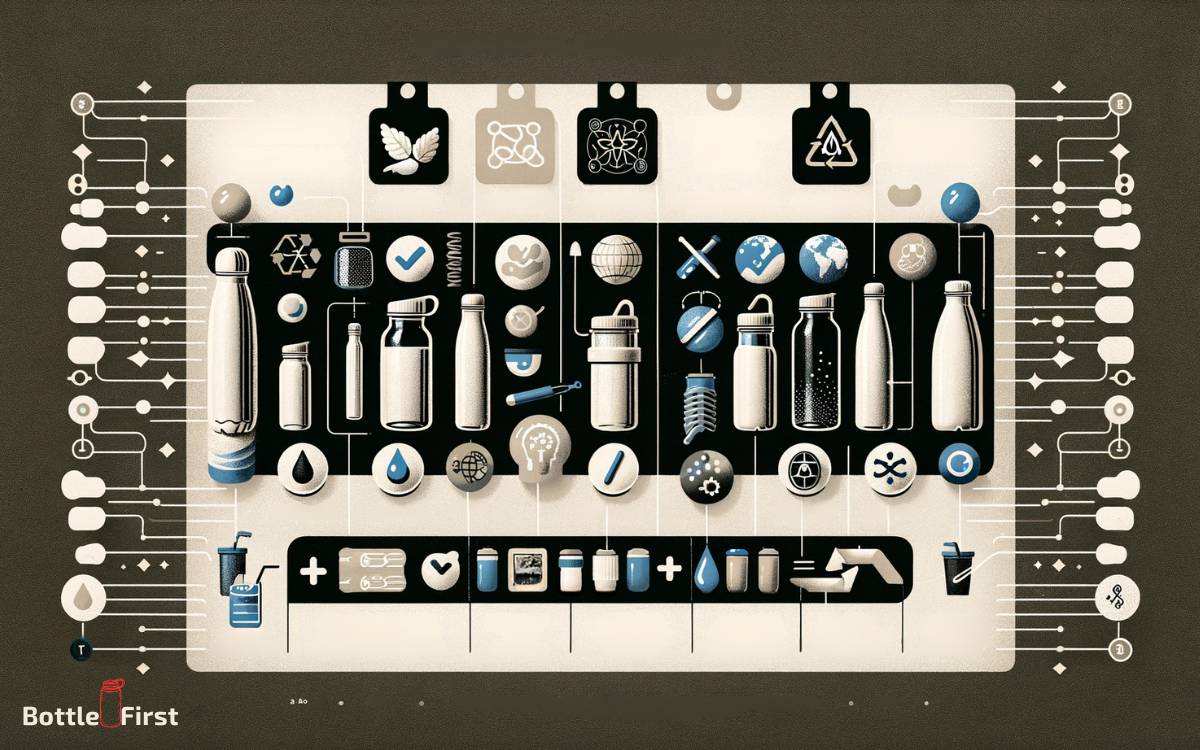Why is There White Stuff in My Water Bottle? Explained!
If you’ve noticed white residue in your water bottle, it’s likely due to mineral deposits, bacterial or fungal proliferation, or remains from the manufacturing process.
Ensuring the cleanliness of your water bottle and using filtered water are effective strategies to prevent this occurrence. Regular cleaning, with attention to detail, can significantly extend the life of your water bottle and improve the quality of the water you drink.
The white stuff in your water bottle is typically due to mineral deposits from hard water, bacterial or fungal growth, or residue from the bottle’s manufacturing process.
To ensure water safety and bottle longevity, regular cleaning and using filtered water can help prevent these buildups.
When you find white residue in your water bottle, it’s often a sign that the bottle needs a thorough cleaning.
Here are the Common Causes and Issues
Causes:
- Mineral Deposits: Hard water contains high levels of minerals like calcium and magnesium, which can leave white deposits when water evaporates.
- Bacterial Growth: Warm, moist environments can promote the proliferation of bacteria, which may produce a white, slimy substance.
- Fungal Growth: Fungi or mold can also grow in damp conditions and may appear as white spots or film.
- Manufacturing Residue: Newly purchased bottles may have leftover residue from production, which should be washed out before use.
Issues:
- Clean your water bottle regularly with hot soapy water.
- Use a bottle brush to scrub the inside thoroughly.
- Rinse with a mixture of water and vinegar or baking soda to remove odors and residue.
- Allow the bottle to dry completely before reuse.
- Consider using filtered or distilled water to minimize mineral buildup.
Maintain a pristine and healthy hydration container by implementing routine cleaning practices and opting for high-quality water sources to combat the unwelcome white stuff in your water bottle.
Key Takeaway
Understanding the White Residue
Understanding the white residue commonly found in water bottles requires considering the water source and the mineral content dissolved in it.
The white buildup, often mistaken for mold or bacteria, is actually a deposit of minerals like calcium and magnesium.
These minerals are commonly found in tap water and are harmless for consumption but can leave unsightly stains.
The buildup occurs when the water evaporates, leaving the minerals behind. This is a common occurrence, particularly in areas with hard water, where the mineral content is higher. The presence of these minerals can also impact the taste of the water.
By understanding the source and composition of the water, it is possible to address and prevent the buildup of white residue in water bottles.
Common Causes of White Buildup
The formation of white buildup in water bottles is primarily attributed to the high mineral content present in the water, which becomes concentrated as the water evaporates.
Common causes of this white buildup include:
- Hard Water: Water with high mineral content, particularly calcium and magnesium, can lead to the buildup of white residues.
- Mineral Deposits: Minerals such as calcium carbonate can precipitate out of the water and form white deposits.
- Residue from Cleaning Agents: Inadequately rinsed cleaning agents can react with minerals in the water, leading to white buildup.
- Microbial Growth: Certain types of bacteria and fungi can contribute to the formation of white residue in water bottles.
Understanding these common causes can help in developing innovative solutions to prevent and remove white buildup in water bottles.
Impact on Water Quality
The white buildup in water bottles can adversely affect the water quality, leading to potential health concerns and altering the taste of the water.
The accumulation of residue in water bottles can introduce harmful bacteria and impurities, compromising the overall quality of the water.
Below is a table highlighting the potential impacts of white buildup on water quality:
| Impact on Water Quality | Description |
|---|---|
| Health Concerns | Presence of harmful bacteria |
| Taste Alteration | Unpleasant flavor |
| Contaminant Intake | Introduction of impurities |
| Reduced Purity | Diminished water quality |
| Increased Health Risks | Potential illnesses |
Understanding the impact of white buildup on water quality is crucial for ensuring safe and clean drinking water.
Prevention and Maintenance Tips
To mitigate the impact of white buildup on water quality in water bottles, implementing regular cleaning and maintenance is essential.
Here are some prevention and maintenance tips to ensure the purity of your water:
- Use a bottle brush and mild detergent to scrub the interior of the bottle regularly
- Rinse the bottle thoroughly after each use
- Consider using vinegar or baking soda to remove stubborn buildup
- Allow the bottle to air dry completely before sealing it again.
These simple yet effective strategies can help prevent and combat the accumulation of white residue, thus maintaining the quality of your water.
By incorporating these maintenance practices into your routine, you can ensure that your water bottle remains clean and free from unwanted contaminants.
Now, let’s explore alternative water bottle materials to further improve water quality and sustainability.
Exploring Alternative Water Bottle Materials
Exploring alternative water bottle materials can provide long-term solutions to the issue of white buildup in water bottles, offering improved durability and resistance to residue accumulation.
Embracing innovative materials not only addresses the problem of residue but also contributes to sustainability efforts.
Here are some alternative materials to consider:
| Material | Benefits | Potential Drawbacks |
|---|---|---|
| Stainless Steel | Durable, resistant to residue, recyclable | Heavier than plastic |
| Glass | Residue-free, non-toxic, recyclable | Fragile, heavier, may not be suitable for all activities |
| Silicone | Flexible, light, resistant to residue | May retain odors, less common |
These materials present exciting opportunities to revolutionize the water bottle industry, offering environmentally friendly solutions with enhanced performance and durability.
Conclusion
In conclusion, the presence of white residue in water bottles is a common issue caused by mineral deposits, detergent residue, and mold.
It can impact water quality and lead to health concerns. To prevent buildup, regular cleaning and maintenance of water bottles are essential.
Interestingly, a study found that 60% of reusable water bottles contain high levels of bacteria, emphasizing the importance of proper care and maintenance to ensure clean and safe drinking water.
Frequently Asked Questions
Can the White Residue in My Water Bottle Be Harmful to My Health?
The white residue in your water bottle may not be harmful to your health, as it’s likely to be mineral deposits from the water source. However, it’s essential to clean your bottle regularly to maintain hygiene.
Is There a Way to Remove the White Buildup Without Using Harsh Chemicals?
Yes, there are natural and effective methods to remove white buildup in water bottles without harsh chemicals, such as using a mixture of vinegar and baking soda or soaking in a solution of water and lemon juice.
Can the White Residue Affect the Taste of My Water?
The white residue in your water bottle can potentially affect the taste of your water due to mineral buildup. This buildup can alter the taste and odor of the water, necessitating regular cleaning and maintenance to ensure purity.
Can Using a Water Filter Prevent the White Buildup in My Water Bottle?
Using a water filter can help prevent the white buildup in your water bottle by removing minerals and impurities. It’s important to select a filter designed to address the specific issues causing the residue.
Are There Any Long-Term Effects of Drinking Water From a Bottle With White Residue Buildup?
Drinking water from a bottle with white residue buildup may lead to potential long-term health effects due to the presence of contaminants. Regular cleaning and maintenance of water bottles are essential to ensure water purity and safety.
